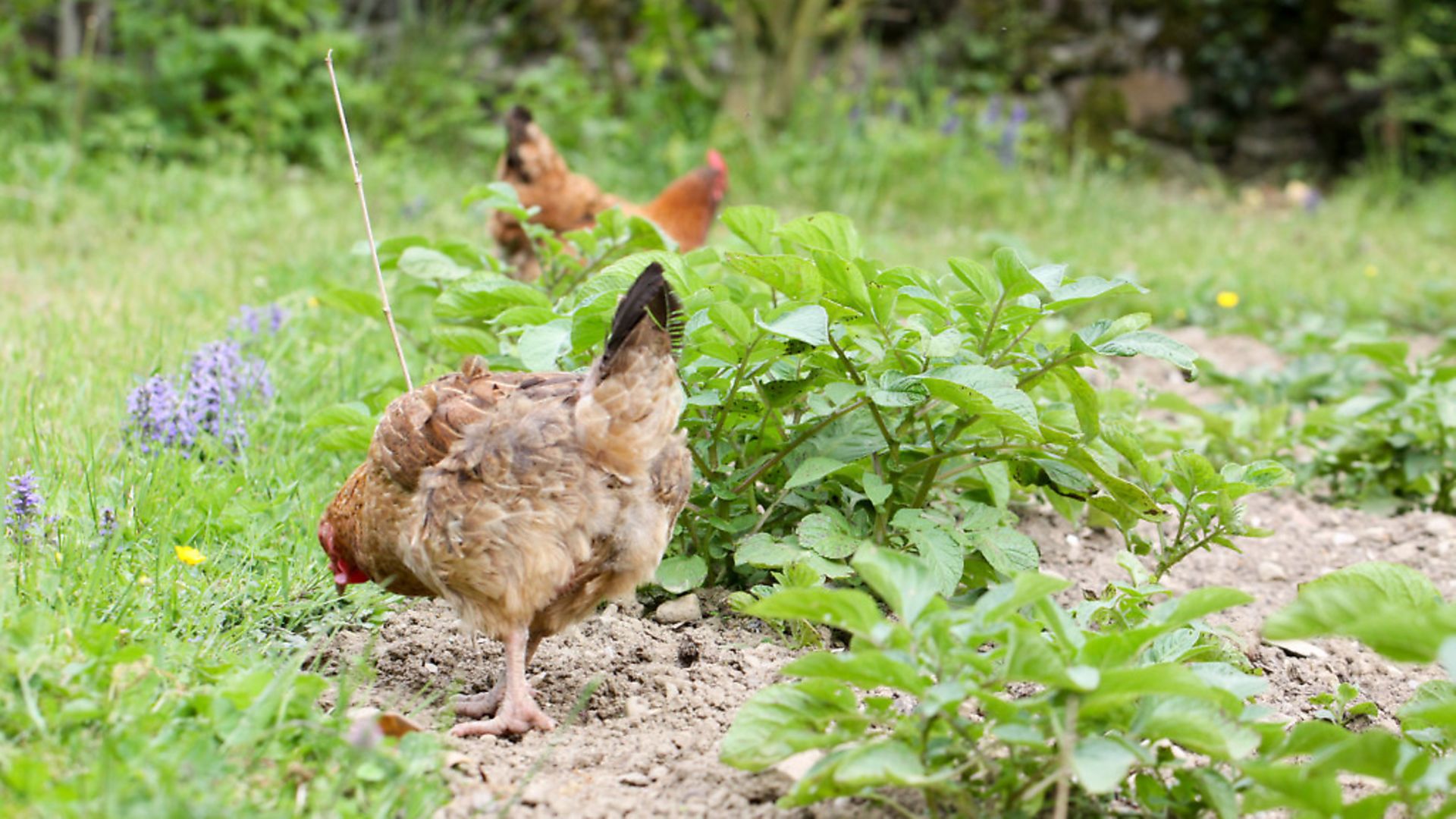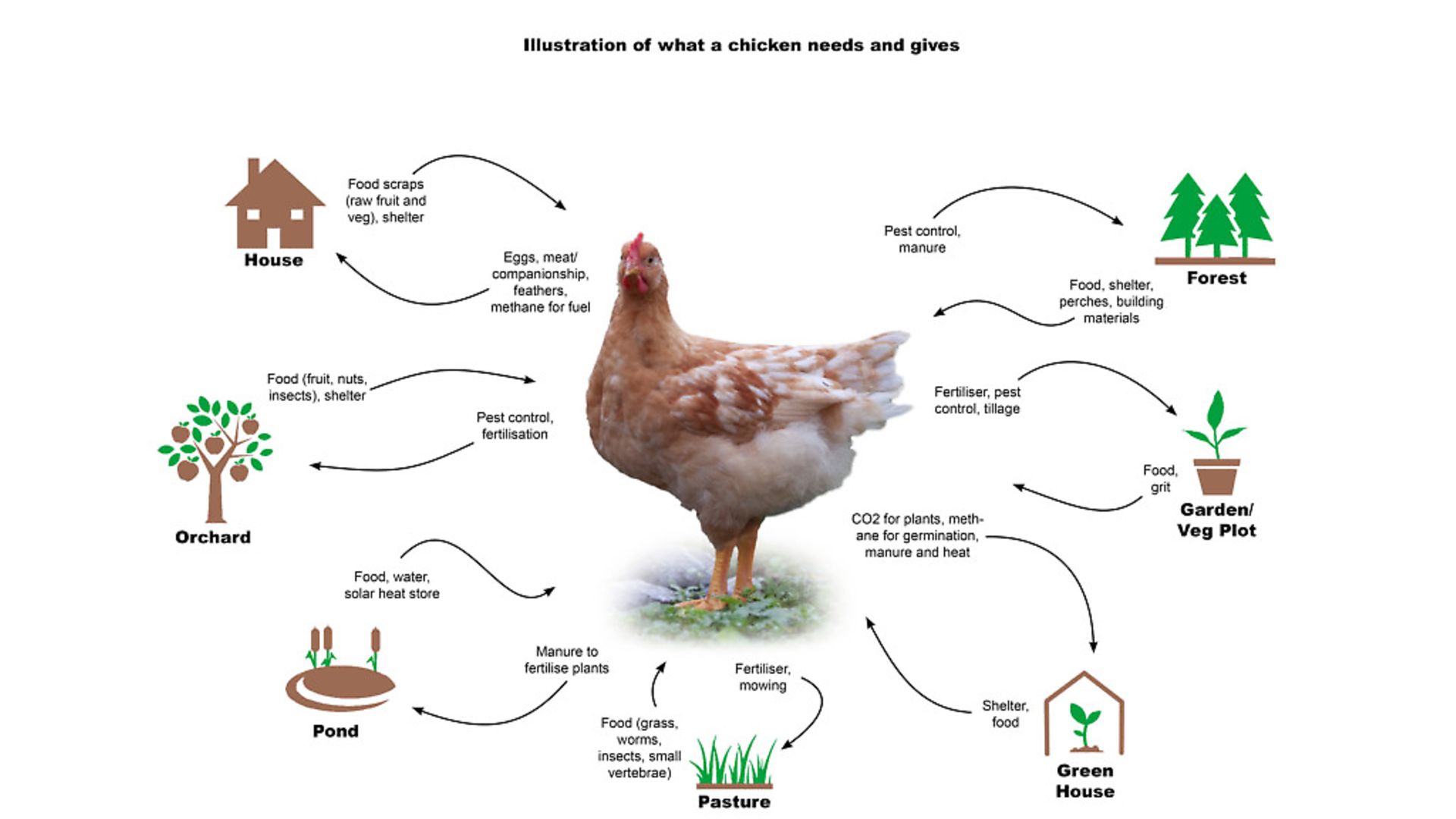Consider how chickens fit in to the overall design and function of your outdoor space. This will really pay dividends. JULIE MOORE explains

Whether you’re just starting out with chickens or you’re already a seasoned henkeeper, it’s worth spending time looking at design concepts that can increase your bounty and efficiency without increasing your workload. Designing smartly will help you reap huge benefits with some help from your chickens.
Taken in its simplicity, design is a connection between things. The key to determining a functional and self-regulating design is to place the elements of your system based upon how they might interact and meet each other’s needs.
Your elements might include your chickens, garden, orchard, vegetable plot, greenhouse, pond, compost heap etc. For example, if you have a vegetable plot and chickens, they should be placed in close proximity so that they can easily provide for each other’s needs. The vegetable plot needs bed preparation, manuring, sowing, weeding and harvesting. It provides food (fruit and vegetables) for people and chickens and compost material. Chickens have a role as: environmentally-friendly tillers (although slower than a rotavator, they can effectively clear all the vegetation and turn the soil over by scratching in any given area); walking herbicides, eating weeds; manure providers; foraging pest controllers, breaking the lifecycle of pests and post-harvest gleaning including preparing the ground for the next crop. So the two elements meet each other’s needs with minimal work or expenditure from you!
Once you’ve identified all your elements, make a list of the needs and outputs of each element. Your chickens can potentially perform many functions: eggs, meat, manure, feathers, heat for the greenhouse, weeding the vegetable plot, tilling the soil in readiness for sowing, pest control, recycling surplus produce, education for children and friendship. In return, a chicken needs shelter from the elements, predators and housing, stress free environment, food, water, sunlight, grit, dust (for bathing) and other chickens.

A head start
Suppose that you want to start growing your own vegetables and want to get a head start by sowing seedlings before it’s time to plant outdoors. To benefit from the many connections of a chicken, you could erect a greenhouse against the sunny side of the coop, partitioning the two with chicken wire so that the chickens don’t destroy the seedlings. The greenhouse helps heat the coop whilst the chickens provide heat for the greenhouse overnight. The chickens produce carbon dioxide and methane which are good for plant growth and germination. The chicken manure is easily harvested and can be used to create hot beds whilst surplus plants can be given to the chickens.
You can begin to see how your elements can work together and how the placement of those elements could play a critical role in your efficiency. Remember that each element has many functions.
However, some elements may be incompatible with other systems. For example, if you live next to a road, you probably wouldn’t want to put your chickens by the roadside. Making connections is key to minimising inputs and maximising yields.
Some elements are mobile whilst others are fixed in place. Chickens are very mobile but a chicken coop may be a permanent structure. In order to make effective connections between less mobile elements, they’ll need to be placed in close proximity to each other, if not physically connected.
Now you can start to place your different elements. It would be prudent to design your elements around a fixed focal point i.e. your house.
Elements requiring the most attention are best placed close to your house where you spend most of your time. How often does a particular element need to be visited either to clean, repair or harvest? Your chicken coop should be visited at least twice daily to let out and shut in the chickens in addition to separate visits to collect eggs. In contrast, an orchard might only receive a handful of visits throughout the year to prune, mow the grass, harvest and to put the chickens through in the spring as pest control and in autumn to eat the windfall fruit. It’s likely that out of all your elements, your chickens receive the most visits each year!
Areas which are most frequently visited such as the chicken coop, vegetable garden and greenhouse are placed near to the house. Orchards, grazing areas and woodlands which require less attention, are placed further away.
You’ll also need to consider how the ‘wild energies’ such as the sun, wind and rain pass through your land. Ideally, you’d want to orientate your coop towards the sunny side and block off the windy side and ensure water is easily provided but the site is not damp or muddy. Planting natural shrubs as a windbreak would protect the chickens from the prevailing wind in the winter, provide shade from the sun in the summer and, depending on the species planted, provide food for the chickens too. Take the common hawthorn, a small, fast growing thorny hedge: the flowers provide nectar and pollen for pollinating insects; the dense, thorny foliage deters predators, affords protection against the elements for your chickens and makes a fantastic nesting site for many birds whilst the glossy red haws are an autumnal feast for the chickens and other wild birds alike. By observing the patterns of nature, you can harness these energies for your benefit rather than them being lost as waste.
By designing so that each element has many functions and is linked to other elements in the design, you’ll create a diversity of yield, resourcefulness and greater opportunity which all enhance efficiency. This multi-functional approach to keeping chickens has many benefits: you have happy and healthier birds, all of their wastes are converted into resources, whilst they will eagerly help you with the more mundane gardening chores of weeding and preparing seed beds, all of which ultimately increases your efficiency whilst decreasing your workload resulting in you having more free time to spend amongst your flock. It’s a fun win-win approach to design!
Image(s) provided by:
Julie Moore
Julie Moore







